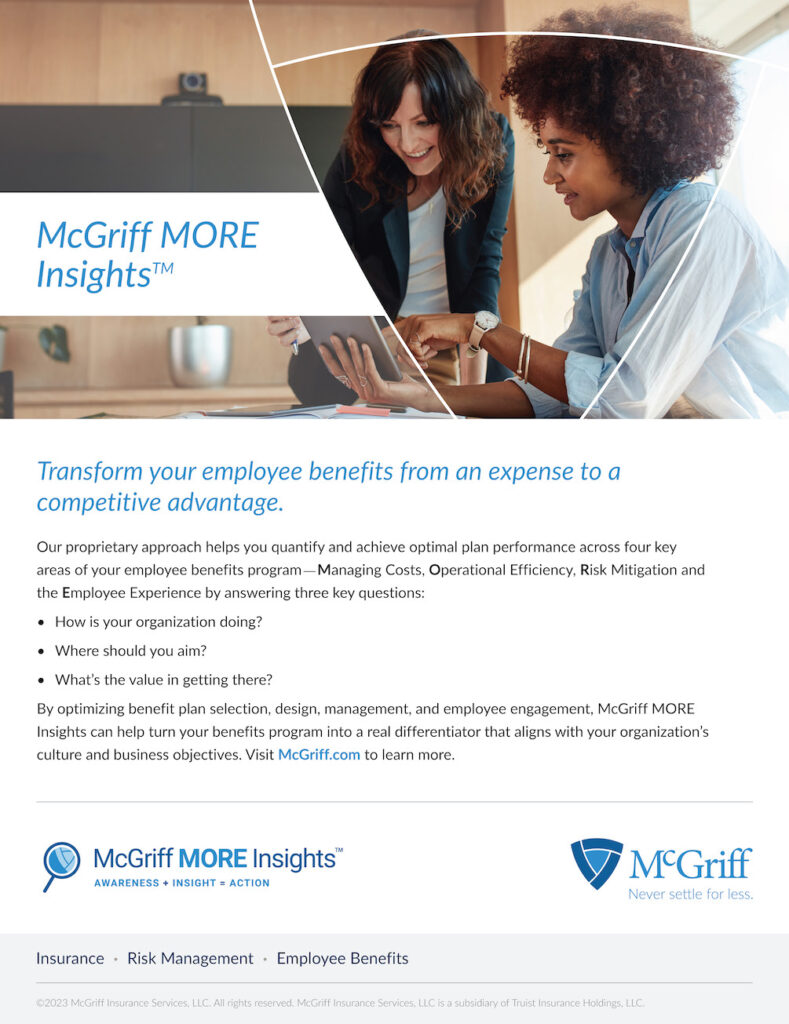By Nick Pearce
It’s likely that many of you just wrapped up open enrollment season in the 4th quarter of 2023. First, congratulations on making it through to the other side! But don’t turn the page on 2023 just yet. Open enrollment is unique because it’s usually one of the only times each year that you have the attention of your entire workforce at once. The first quarter of a new plan year is an excellent time to review the outcomes of these decisions and see how they compare to what you had forecasted for the upcoming year. During open enrollment, the elections of your employees illustrate their preferences and what they value the most within your benefit offerings. For example, if you forecasted that a large segment of your population would elect a new voluntary benefit offering this year, but it wasn’t as popular as you had hoped, it would be helpful to understand the trend so that you can adjust your go-forward strategy for the remainder of the year. Use this data to your advantage! It can enhance employee satisfaction, align future offerings to their needs, and even measure the effectiveness of your communication strategy.
Conducting a post-open enrollment analysis is one of the best ways to chart your path to accomplish these goals. An analysis will provide your team valuable information to help shape the organization’s benefits strategy moving forward. Most times you can rely on the data to simply confirm the direction you are heading, and course correct to any minor differences in experience versus your expectations. Perhaps you updated your plan offerings to add an additional plan, or maybe you adjusted your employee contribution strategy to entice employees to migrate to a more cost-effective plan offering. Whatever the goal was, take a moment to review the data to tell you how close you were in achieving your desired outcomes. If you were successful, identify the most likely reasons for this success and use these strategies for future initiatives. If you fell short, take a moment to understand why and how you can do better in the future.
As you know, financial considerations are an important component of benefits management. Changes in year-to-year enrollment can influence previously forecasted budgets and knowing what happened can help you respond to those differences early in the year. By reviewing employee selections, you can compare the cost effectiveness of certain plan options and re-forecast how they will affect the benefits budget in 2024.
Of course, the data can tell you more than just the financial impact. Understanding the level of employee engagement with new voluntary benefit offerings or certain well-being or technology solutions can help you refine your communication and benefits education strategy. This simple practice can help ensure the success of these programs you undoubtedly did a lot of work to evaluate and implement last year. This will help you gain a deeper understanding of which benefits resonated with employees and which were not as well received or understood. Open enrollment is important, but it’s only the start of a successful benefits communication and education strategy. The sooner you can identify the trends, the better you’ll be able to react to them.
In an ever-changing work environment, doing periodic workforce analyses is an important strategic tool for future planning. By listening to your workforce, tracking trends in demographics and preferences, employers can adapt their strategy to stay ahead of the curve. By employing a forward-looking approach you’ll be sure to keep your benefits package relevant and attractive in a competitive job market. It might just be the difference in your talent retention and recruitment efforts this year.

VP, Healthcare Actuary
EB Insights & Analytics Practice Leader
McGriff
npearce@McGriff.com

